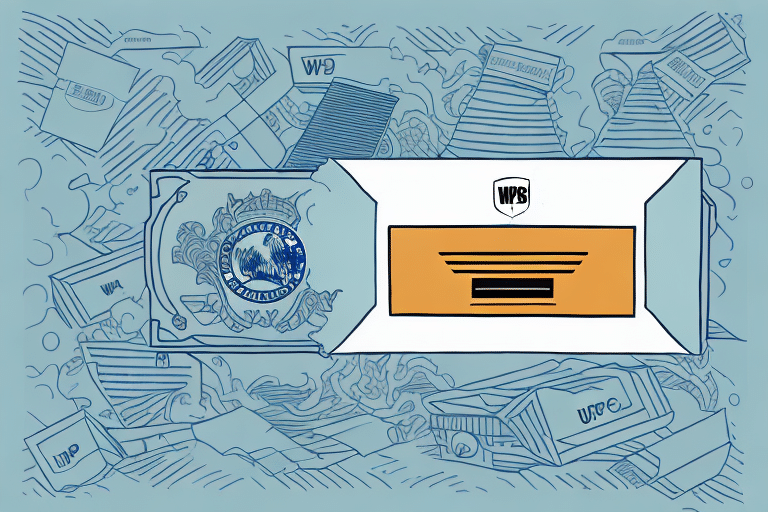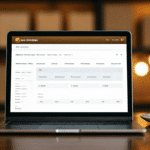Introduction to UPS WorldShip
If you're planning on using UPS WorldShip for your business shipping needs, it's essential to understand the different billing types available. UPS WorldShip is a robust software solution designed to simplify the shipping process, allowing businesses to efficiently manage and process shipments. According to recent industry reports, businesses using WorldShip have seen up to a 20% reduction in shipping costs through optimized rate selection and streamlined operations.
WorldShip offers a range of features, including data import/export, custom report creation, and real-time shipment tracking. Additionally, it provides access to discounted shipping rates and comprehensive cost management tools, making it suitable for both small businesses and large enterprises. By leveraging these features, businesses can save time and money while ensuring their shipments are handled efficiently.
Overview of Shipping and Billing with UPS WorldShip
Using UPS WorldShip to process shipments involves different billing mechanisms to accommodate various business needs. Billing is typically conducted on a weekly basis, providing a detailed breakdown of all shipping costs. This granular billing allows businesses to maintain better control over their shipping expenses and streamline their financial management.
In addition to diverse billing options, UPS WorldShip offers multiple shipping speeds, including next-day, two-day, and ground shipping. The platform also provides comprehensive tracking information for all shipments, ensuring that businesses can monitor their packages and guarantee timely deliveries.
Moreover, UPS WorldShip enables the storage of frequently used addresses, package sizes, and shipping preferences, facilitating quick and efficient shipment processing. Businesses can easily view and download invoices and shipping reports directly from the interface, offering a transparent overview of shipping activities and costs.
Benefits of Using UPS WorldShip for Shipping and Billing
Adopting UPS WorldShip for your shipping operations brings numerous advantages. One significant benefit is access to competitive shipping rates, which can substantially reduce overall shipping costs. According to a UPS Annual Report, businesses using WorldShip have achieved higher cost-efficiency compared to those using alternative shipping solutions.
Additionally, UPS WorldShip provides a variety of shipping options tailored to different business needs, allowing for scalable shipping operations. The advanced tracking and reporting features enable real-time monitoring of shipments and the generation of customized reports, aiding in data-driven decision-making and strategy optimization.
Integration with other UPS tools and services, such as UPS CampusShip and UPS My Choice, offers a comprehensive logistics solution, enhancing overall operational efficiency.
How to Set Up and Configure UPS WorldShip for Billing
Setting up UPS WorldShip for billing is a straightforward process. Begin by logging into the WorldShip software and navigating to the Setup tab. From there, access the billing options and select the billing type that best suits your business requirements. You will then be prompted to enter your billing details, such as your billing address and payment information.
UPS WorldShip offers flexible billing frequencies, including daily, weekly, and monthly billing cycles. Businesses can also set up automatic payments to ensure bills are paid on time, thereby avoiding late fees. Regularly reviewing billing statements is recommended to ensure accuracy and promptly address any discrepancies.
Proper configuration of billing settings not only streamlines the shipping process but also aids in effective expense management, allowing businesses to maintain financial control and transparency.
Understanding the Different Billing Types in UPS WorldShip
UPS WorldShip provides three primary billing types, each catering to different business needs:
- Prepaid Billing
- Collect on Delivery (COD) Billing
- Third-Party Billing
Choosing the right billing type is crucial for optimizing your shipping operations. Below, we delve into each billing type's advantages and disadvantages to help you make an informed decision.
Prepaid Billing: Advantages and Disadvantages
Prepaid Billing involves paying for your shipments in advance. One of the main advantages is having complete control over shipping costs, as the exact amount is known upfront. This predictability aids in budgeting and cash flow management, making it particularly beneficial for small businesses.
However, a drawback of prepaid billing is the lack of refunds if actual shipping costs are lower than the prepaid amount. Additionally, businesses with fluctuating shipping volumes may find it challenging to accurately estimate costs in advance.
Overall, prepaid billing is ideal for businesses seeking cost predictability and control over their shipping expenses.
Collect on Delivery (COD): How It Works with UPS WorldShip
Collect on Delivery (COD) Billing allows the recipient to pay for the shipping costs upon delivery. This option is advantageous for businesses that prefer not to pay shipping costs upfront, reducing the immediate financial burden.
COD billing can also mitigate the risk of fraud, as payment is collected at the time of delivery, ensuring that the recipient recognizes and accepts the charge. This is particularly useful for high-value or sensitive shipments where payment assurance is critical.
However, COD may present challenges such as potential delays in payment if the recipient disputes the charge or refuses to pay. Additionally, not all carriers offer COD as an option, and there may be restrictions on the types of packages eligible for COD billing.
Third-Party Billing: A Comprehensive Guide
Third-Party Billing involves a separate company or entity paying for your shipping expenses. This billing type is suitable when a customer or partner agrees to cover shipping costs, allowing businesses to extend benefits without bearing the immediate costs themselves.
When implementing third-party billing, it's essential to ensure clear agreements among all parties involved, including the shipping carrier and the billing entity. Maintaining accurate records of all transactions and invoices is crucial to prevent misunderstandings or disputes.
Third-party billing can enhance business relationships by offering flexible payment arrangements, but it requires diligent management to ensure seamless operations.
Comparison of Different Billing Types in UPS WorldShip
Choosing the appropriate billing type depends on various factors, including business size, shipping volume, and financial preferences. Here's a comparison to help you determine the best fit:
- Prepaid Billing: Offers complete cost control and predictability but requires upfront payment.
- COD Billing: Reduces upfront costs and mitigates fraud risk but may result in payment delays.
- Third-Party Billing: Provides flexible payment arrangements but necessitates clear agreements and accurate record-keeping.
Each billing type has its unique advantages and potential drawbacks. Businesses should consider their specific needs and operational dynamics when selecting the most suitable billing option.
Additionally, consider the level of tracking and visibility required. Prepaid billing often offers the most detailed tracking information, whereas COD and third-party billing may have more limited tracking capabilities based on the agreement terms.
Tips for Choosing the Right Billing Type in UPS WorldShip
Selecting the appropriate billing type in UPS WorldShip requires careful consideration of your business's unique needs. Here are some tips to guide your decision:
- Assess Your Business Requirements: Evaluate your shipping volume, financial workflows, and budget constraints.
- Weigh Pros and Cons: Consider the advantages and disadvantages of each billing type in the context of your operations.
- Consult UPS Representatives: Engage with UPS experts to gain insights and recommendations tailored to your business.
Additional factors to consider include the type of products you ship and their respective delivery requirements. For instance, businesses shipping perishable items may benefit from billing types that support expedited shipping options.
Furthermore, if your operations include international shipping, opt for billing types that offer competitive rates and support for global logistics.
Common Issues and Solutions for UPS WorldShip Billing
While UPS WorldShip is designed for reliability, billing issues can still arise. Common challenges include:
- Late Billing: This can disrupt financial planning and cash flow management.
- Incorrect Billing Information: Errors in billing details can lead to discrepancies and payment delays.
- Overpayment Refunds: Situations where overpayments occur require prompt resolution to maintain accurate financial records.
To address these issues, it's advisable to:
- Contact UPS Support: Reach out to UPS representatives for assistance with billing discrepancies.
- Verify Billing Details: Regularly review and confirm billing information to prevent errors.
- Utilize Reporting Tools: Leverage WorldShip's reporting features to monitor billing activities and identify potential issues early.
Proactive management and regular audits of billing statements can help mitigate common billing issues, ensuring a smooth and efficient shipping process.
Conclusion: Why UPS WorldShip is a Leading Shipping and Billing Solution
UPS WorldShip stands out as a flexible and customizable solution for businesses aiming to manage their shipping requirements effectively. With a variety of billing types and a comprehensive array of shipping options, WorldShip caters to diverse business needs, enabling companies to optimize their shipping strategies.
Utilizing WorldShip for both shipping and billing provides access to competitive rates, advanced tracking, and detailed reporting, which collectively contribute to cost savings and enhanced operational efficiency. Whether you're a small business seeking to streamline shipping processes or a large enterprise requiring robust logistics management, UPS WorldShip offers the tools and features necessary to support your business growth.
Understanding the different billing types available in UPS WorldShip is crucial for maximizing the software's potential and aligning it with your business objectives. By selecting the right billing option and leveraging WorldShip's extensive features, businesses can achieve greater shipping efficiency, better cost control, and improved customer satisfaction.
For more detailed information on UPS WorldShip and its features, visit the official UPS WorldShip webpage.




















